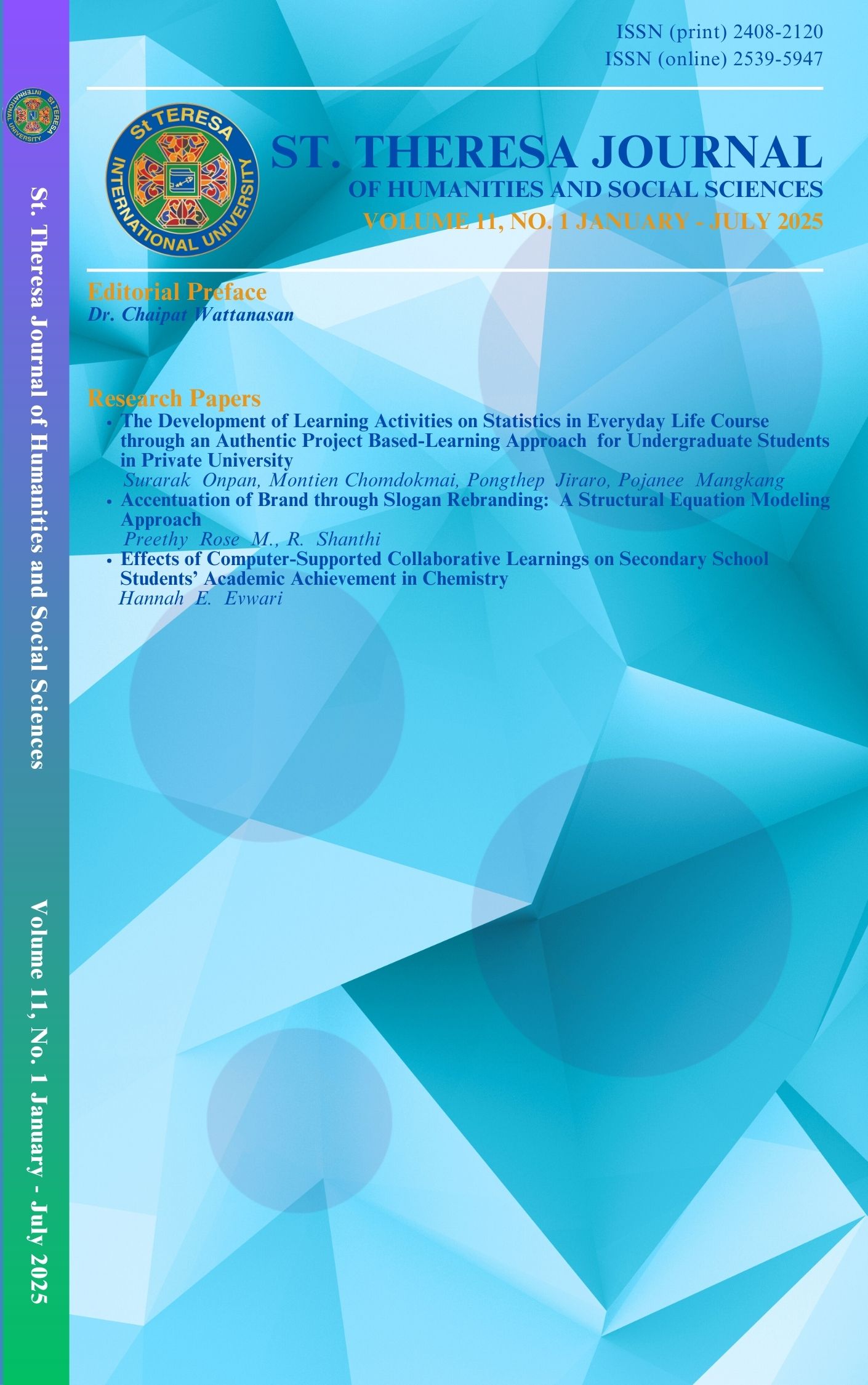Consumer Confidence in Earthquake-resistant High-Rise Buildings in Bangkok
Keywords:
Confidence in Earthquake-resistant High-Rise Buildings, Consumer Confidence, Corporate Brand Trust PA Q3Abstract
The purpose of this study was to investigate how consumer confidence in corporate brand trust in Bangkok's high-rise building construction was impacted by confidence in earthquake-resistant high-rise buildings. The samples consisted of 381 residents of high-rise buildings in Bangkok. The stratified random sampling was used, with the type of building Construction Company as the stratification criterion. The instrument used in the study was a questionnaire developed by the researchers. The statistics used were mean, S.D., and one-way ANOVA,The study results found that 1) Consumer confidence of residents in high-rise buildings was at a high level.2) There were no differences in the level of corporate brand trust among residents of high-rise buildings built by construction companies with joint ventures with Thai-East, Thai-Thai, and thai-East joint ventures. 3) High-rise building residents had a high level of confidence in the earthquake-resistant high-rise buildings.4) There were no differences in the level of confidence that high-rise building residents had in earthquake-resistant high-rise buildings built by construction companies with Thai-East, Thai-Thai, or Thai - West joint ventures.5) Customer confidence in earthquake-resistant high-rise buildings was impacted by six features, with regression coefficients of .221, .149, .132, .104, .089, and .059, respectively, but one communication, information sharing, and incident management had no effect.
References
Choosakul, C., Monkaew, S., & Suksoom, P. (2024). Safety Assessment for Working at Height in Building Construction Projects in Bangkok. Journal of Architecture, Design and Construction, 6(2), 132-141
Gillad, R., & Alen, W. (2013). Rising Cities: Condominium Development and the Private Tranformation of the Metropolis. Geoforum, 49, 160-172.
Giusto, S., Cattari, S. & Lagomarsino, S. (2023). A Risk-Based Definition of Confidence Factor for the Seismic Assessment of URM Existing Buildings. Procedia Structure Integrity, 44(2023), 402-409.
Ismail, N. H. (2021). A Dynamic Relationship between Consumer Confidence and Residential Property Price: Empirical Evidence for Malaysia. International Journal of Property Sciences, 11(1), 16-34.
Jimmie, H., & Charles, H. (1981). Safety Programs in Large Construction Firm. Journal of Construction Division, 107, 455-467.
Klinchuanchun, P. (2018). Krungsri Research: Industry Outlook 2018-2020: Housing in BMR. Retrieved January 15, 2019, from https://www.krungsri.com
Mihoko, M., Aizu, N., Nakamura, F., Leeruttanawisut. (2020). Impact of Globalization on Travel Behavior in Transit-Oriented Development Areas in Bangkok, Thailand. Case Studies on Transport Policy, 8(4), 1341-1351.
Munaier, C. G., Rocha, R. D., & Portes, J. H. (2022). Building Brand Trust by Choosing the Right Location: When the Business Headquarters Site Influences Clients’ Trust in A Brand. Brazilian Journal of Marketing, 21(1), 88-108.
Policy and Planning Division. (2019). Study report on the expansion of residential areas in Bangkok. Bangkok: Office of Urban Planning and Development.
Puncreobutr, V., & Kin, M. M. (2017). Cost Management of the High-Rise Buildings in Thailand. Technology, Operations Management & Production eJournal, 10(14), 1-9.
Puncreobutr, V., Pusapukdepop, J., Pengsa-iem, V., & Roy, S. S. (2019). Investing in the Construction of High-Rise Buildings in the Savan-Seno Special Economic Zone of Lao PDR, According to the Sufficient Economic Theory. Built Environment eJournal, 8(38), 1-8.
Puncreobutr, V., Pusapukdepop, J., Pengsa-iem, V., Chanragsa, W.,& Amos, P. (2019b). The Design of High-rise Buildings in Smart Cities of Thailand. International Political Economy: Investment & Finance eJournal, 7(79), 1-8.
Puncreobutr, V., Trinokorn, P., Pusapukdepop, J., Dhanesschaiyakupta, U., Pa-alibo, M. A. (2020). The Design of Real Estate Housing Project in Bangkok and The Metropolitan, Thailand for the Year 2021. i-manager’s Journal on Management, 15(1), 19-25.
Ratchakitcha. (2021a). Ministerial Regulations on Load-bearing, Resistance, Durability of Buildings and Soil Supporting Buildings to Resist Earthquake Vibrations B.E. 2564. Retrieved December 22, 2019, from https://www.ratchakitcha.soc.go.th/DATA/PDF/2564/A/016/T_0013.PDF
______. (2021b). Announcement of the Ministry of Interior on the design and calculation of building structures to resist earthquake vibrations B.E. 2564. Retrieved January 15, 2019, from https://www.ratchakitcha.soc.go.th/DATA/PDF/2564/E/275/T_0016.PDF
SCB EIC. (2025). Preliminary assessment of the earthquake's impact on the Thai economy and business sector. Retrieved April 1, 2025,
from https://www.scbeic.com/th/detail/file/product/9750/h60wi15tjv/Flash-Earthquake-2025-20250401.pdf
Srichai, P., & Netsuwan, P. (2021). The Perceptions and Coping Style of Disaster Victims: A Case Study of Affected People from Earthquake in Phan District, Chiangrai. Ratchaphruek Journal, 11(2), 73-81.
Sunthoraopas, S., & Wongyuen, T. (2021). Factors Affecting Quality Control of High-Rise Building Construction in Bangkok: A Case Study in Huai Khwang District. The 26th National Convention on Engineering, 23-25 June, Online Conference. CEW-07-1 – CEM-07-7
Tultrairatana, S., & Hengpraprom, S. (2019). Earthquake Literacy among People Living in High-rise Buildings in Bangkok. Chula Med Bull, 1(1), 3-11.
Vaisiriroj, T., & Ussavadilokrit, M. (2022). Factors Affecting the Saleable Area of Residential Condominium Project. KKBS Journal of Business Administration and Accountancy, 6(1), 94-110.







